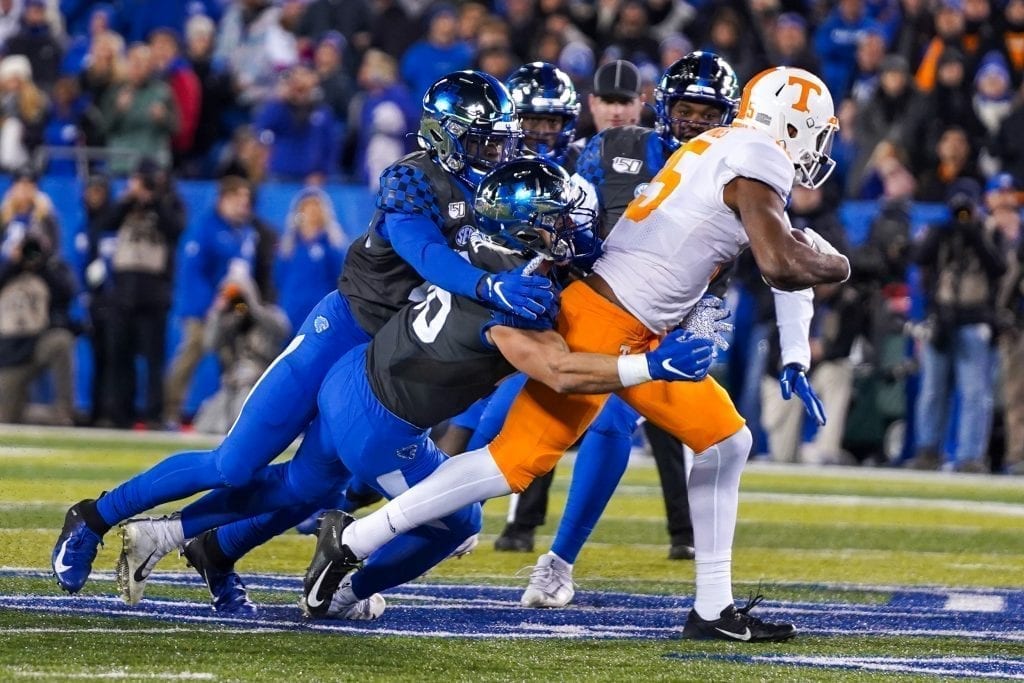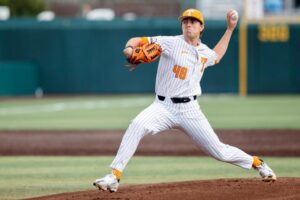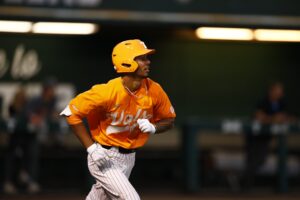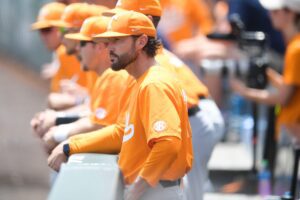A guide to sports photography
Sports photographers Anthony Stalcup, Kelly Huff and Ben Gleason share tips and tricks for new sports photographers.

Tennessee wide receiver Jauan Jennings (15) fights through Kentucky defenders when Tennessee played Kentucky in Kroger Field on November 9, 2019. Photo/ Ben Gleason
There are few feelings worse for a photographer than spending hours at a shoot just to realize at the end that you have no good pictures, but many first-time sports photographers know this feeling well.
Photographing athletes is a whole different ballgame than portrait or landscape photography. However, getting good sports shots, which may include equipment such as that bowstring, may be easier than you think.
“From game planning to shooting to editing raw, it’s kind of low-entry things that you’ve got to put all together and fit just right to get a great photo,” University of Tennessee football photographer Ben Gleason said.
Following these simple photography tips from expert sports photographers will help you shoot good, if not great, sports pictures.
Understanding the Game
One of the most important factors to success is knowing the sport you are photographing.
“If you’ve never played a down of football and you’re covering a football game, you’re one step behind anybody else that’s played football,” Marietta Daily Journal photographer Kelly Huff said. “If it’s third-and-long and you’re waiting on a run, you’re looking the wrong way with your lens.”
Gleason suggests learning about the teams that will be competing.
“You’ve got to understand the atmosphere of the game and the intensity around it. Then you’ll find the pictures that match that,” Gleason said.
Huff explains that knowing the players can also help you predict what they will do next.
“When Justin Fields was a senior at Harrison, I knew he was a dual-threat. He could run and he could pass, so I always positioned myself to be ahead of where he was,” Huff said. “I got a lot of pictures that way when at the last minute he tossed [the ball] and I’m standing right there by his wide receiver.”
Knowing the Environment
Gleason also suggests checking the forecast before you go to an outdoor shoot.
“If it’s going to be rainy, you’ve got to make sure you have the proper rain gear. You don’t want to cut corners and use inadequate gear and damage your equipment,” he said. “If it’s sunny and you’re outside, you’re going to want [lens] filters.”
Shooting in indoor gyms and arenas can cause problems of their own, as Gleason said high school and public gyms often have poor lighting.
“Inside, white balance becomes the technical aspect,” he said. “You have to adjust your white balance to look correct. That just makes the colors and the tones look correct.”
Positioning Properly
Any number of things could happen in a sporting event, so it can be difficult to predict where you should be.
“Sometimes it’s just blind luck and you’re just in the right place at the right time,” professional freelance photographer Anthony Stalcup said. “You try to give yourself the best chance to get something good.”
However, there are still steps you can take to improve the likelihood of capturing a good photo.
Gleason moves around the field to get a variety of angles, though he tries to do so invisibly to not draw the eye of the athletes.
“You want to be a ghost,” Gleason said. “You’re taking pictures of people and the natural emotions of what they’re doing. If you’re taking portraits of people, or people are posing for a camera, now it’s obviously a staged photo and nothing is candid about it. The emotions aren’t there.”
Both Gleason and Stalcup said that always being ready is critical to capturing good photos.
Avoid “chimping,” or looking at your camera screen after every picture. “You’ve got to be prepared for the moments after the play for emotion,” Stalcup said. “If you’re chimping you’re not getting [pictures of] what you see.”
Selective Snapping
There are thousands of opportunities for a decent photo during a sporting event, but avoid settling for decent photos when you could get better ones.
Stalcup says spontaneity, action and emotion all make for good sports pictures, but uniqueness makes for great ones.
“You’ve got to capture the moment. It could be a play, it could be a conversation or it could be a huddle,” Stalcup said. “There’s a split second in time that’s going to be the best moment that captures what was happening before and what was happening after the moment.”
Editing Efficiently
Huff, who uses Photoshop and Photo Mechanic, and Stalcup, who uses Bridge, are minimalists when it comes to editing.
“What I’ve always been taught was shoot your picture in the camera so you don’t have to edit it,” Huff said. However, all three photographers edit their photos to improve image sharpness and color. “You can take a picture and you can honestly edit the colors to make it pop and make it look lifelike,”
“As long as your settings are right when you take the photo you can have a lot to work with when you’re editing it,” said Gleason who uses Lightroom.
Edited by Donna Mitchell and Maddie Torres
Featured image by Ben Gleason



